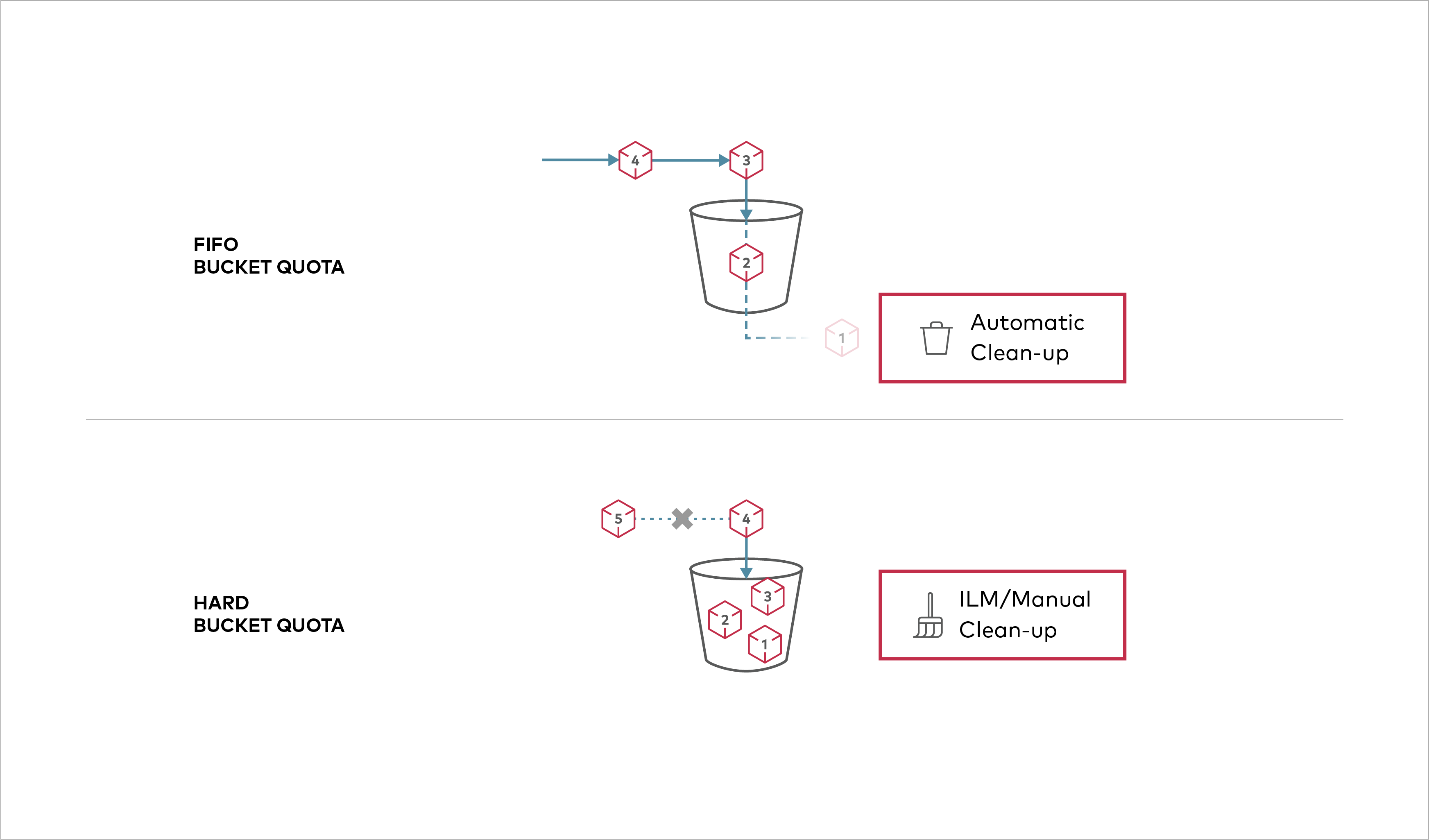- Sort Score
- Result 10 results
- Languages All
Results 1 - 10 of 192 for black (0.13 sec)
-
docs/sts/web-identity.md
# AssumeRoleWithWebIdentity [](https://slack.min.io) ## Introduction MinIO supports the standard AssumeRoleWithWebIdentity STS API to enable integration with OIDC/OpenID based identity provider environments. This allows the generation of temporary credentials with pre-defined access policies for applications/users to interact with MinIO object storage.
Plain Text - Registered: Sun May 05 19:28:20 GMT 2024 - Last Modified: Thu Jan 18 07:03:17 GMT 2024 - 19.2K bytes - Viewed (1) -
docs/config/README.md
# MinIO Server Config Guide [](https://slack.min.io) [](https://hub.docker.com/r/minio/minio/) ## Configuration Directory
Plain Text - Registered: Sun May 05 19:28:20 GMT 2024 - Last Modified: Mon Sep 11 21:48:54 GMT 2023 - 17.7K bytes - Viewed (0) -
docs/bucket/quota/README.md
# Bucket Quota Configuration Quickstart Guide [](https://slack.min.io) [](https://hub.docker.com/r/minio/minio/)  Buckets can be configured to have `Hard` quota - it disallows writes to the bucket after configured quota limit is reached.
Plain Text - Registered: Sun May 05 19:28:20 GMT 2024 - Last Modified: Tue Oct 25 00:44:15 GMT 2022 - 1.1K bytes - Viewed (0) -
docs/tls/kubernetes/README.md
# How to secure access to MinIO on Kubernetes with TLS [](https://slack.min.io) This document explains how to configure MinIO server with TLS certificates on Kubernetes. ## 1. Prerequisites - Familiarity with [MinIO deployment process on Kubernetes](https://min.io/docs/minio/kubernetes/upstream/operations/installation.html). - Kubernetes cluster with `kubectl` configured.
Plain Text - Registered: Sun May 05 19:28:20 GMT 2024 - Last Modified: Thu Sep 29 04:28:45 GMT 2022 - 3K bytes - Viewed (0) -
docs/bucket/retention/README.md
# Object Lock and Immutablity Guide [](https://slack.min.io) MinIO server allows WORM for specific objects or by configuring a bucket with default object lock configuration that applies default retention mode and retention duration to all objects. This makes objects in the bucket immutable i.e. delete of the version are not allowed until an expiry specified in the bucket's object lock configuration or object retention.
Plain Text - Registered: Sun May 05 19:28:20 GMT 2024 - Last Modified: Thu Sep 29 04:28:45 GMT 2022 - 3.9K bytes - Viewed (0) -
internal/disk/stat_linux.go
// e.g. if the mount is based on /dev/nvme0n1p1, let's calculate the // real device name (nvme0n1) to get its sysfs information parentDevPath, e := os.Readlink("/sys/class/block/" + devName) if e == nil { parentDev := filepath.Base(filepath.Dir(parentDevPath)) qst, err = bfs.SysBlockDeviceQueueStats(parentDev) } } if err == nil {
Go - Registered: Sun May 05 19:28:20 GMT 2024 - Last Modified: Mon Feb 26 19:34:50 GMT 2024 - 4.8K bytes - Viewed (0) -
cmd/object-api-common.go
"github.com/dustin/go-humanize" ) const ( // Block size used for all internal operations version 1. // TLDR.. // Not used anymore xl.meta captures the right blockSize // so blockSizeV2 should be used for all future purposes. // this value is kept here to calculate the max API // requests based on RAM size for existing content. blockSizeV1 = 10 * humanize.MiByte // Block size used in erasure coding version 2.
Go - Registered: Sun May 05 19:28:20 GMT 2024 - Last Modified: Tue Nov 21 01:09:35 GMT 2023 - 2.1K bytes - Viewed (0) -
docs/metrics/prometheus/README.md
# How to monitor MinIO server with Prometheus? [](https://slack.min.io)
Plain Text - Registered: Sun May 05 19:28:20 GMT 2024 - Last Modified: Fri Apr 12 15:49:30 GMT 2024 - 7.1K bytes - Viewed (0) -
docs/debugging/xl-meta/main.go
Go - Registered: Sun May 05 19:28:20 GMT 2024 - Last Modified: Wed Apr 24 17:56:22 GMT 2024 - 20.2K bytes - Viewed (1) -
docs/kms/README.md
# KMS Guide [](https://slack.min.io) MinIO uses a key-management-system (KMS) to support SSE-S3. If a client requests SSE-S3, or auto-encryption is enabled, the MinIO server encrypts each object with an unique object key which is protected by a master key managed by the KMS. ## Quick Start
Plain Text - Registered: Sun May 05 19:28:20 GMT 2024 - Last Modified: Thu Jan 18 07:03:17 GMT 2024 - 7.1K bytes - Viewed (0)